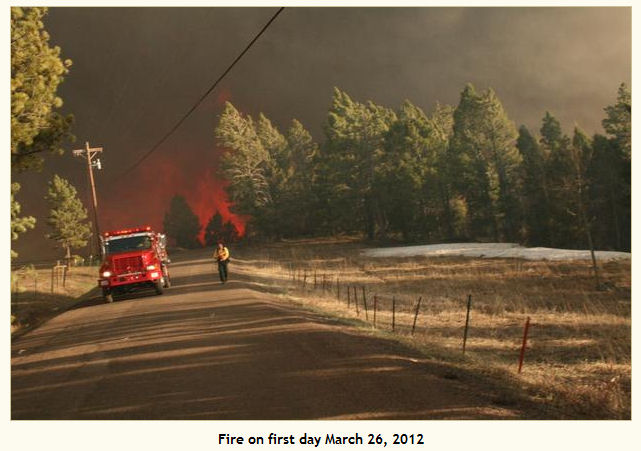Residents of Jefferson County southwest of Denver learned tonight that they won’t be receiving compensation from the state for their claims of damage by the Lower North Fork Fire back in March. The fire, a prescribed fire by Colorado State Forest Service (CSFS) personnel, got away from them and blazed over a couple of ridges, killed three people, burned a couple dozen homes, and caused $11 million in damage.
ABC7 News reported that residents’ claims will be postponed until an insurance company lawsuit is settled. Back in April, an insurance company and a utility company filed “notice of claims” against the state. But Deputy Attorney General David Blake says compensation, if any, is a long ways off — because of the pending lawsuit by the insurance companies, the state claims board can’t yet address residents’ claims for compensation.
“Realistically, we’re talking about many months, if not over years,” Sen. Ellen Roberts told the Denver Post.
The prescribed fire was ignited on March 22 by the CSFS on property belonging to the Denver Water Department. They completed the burn on the same day; firefighters mopped up the next day and patrolled the area for two more days. But on the next day, a cold front passed through with gusts over 50 mph. The fire re-ignited and took off, crowning and heading northeast onto private lands. Local firefighters immediately responded to the wildfire, but were unable to contain it. It was contained about 10 days later on April 2 by Rich Harvey’s Type 1 team … in 22-degree weather and snow.
 Legislators passed new laws after the fire, creating a five-member legislative commission to investigate what happened when the fire took off, along with companion legislation that allows residents to file claims with the state for compensation. The Lower North Fork Wildfire Commission members visited the fire area, led by Elk Creek Fire Chief Bill McLaughlin. His department was one of three VFDs that responded to the fire.
Legislators passed new laws after the fire, creating a five-member legislative commission to investigate what happened when the fire took off, along with companion legislation that allows residents to file claims with the state for compensation. The Lower North Fork Wildfire Commission members visited the fire area, led by Elk Creek Fire Chief Bill McLaughlin. His department was one of three VFDs that responded to the fire.
McLaughlin explained how the fire went wrong. Firefighters had specified a trigger point, and decided that if the fire crossed that point, residents two miles away would be evacuated. They were supposed to have a good two hours to get out, but the fire ripped up the ridge in just 12 minutes. McLaughlin said 6-foot flames turned into 40-foot flames and then to 100-foot flames as the fire roared over the hill.
The state enacted an indefinite ban on prescribed fires after the 4,100-acre Lower North Fork Fire was contained.
State Rep. Claire Levy, a member of the investigative commission, said people will want the commission to find blame. “I think we need to work on preparing people who do choose to live in high wildfire areas to deal with that,” she said, “and recognize the risk to loss of life and property is very high and that is something they are knowingly taking on and the state cannot protect them.”
